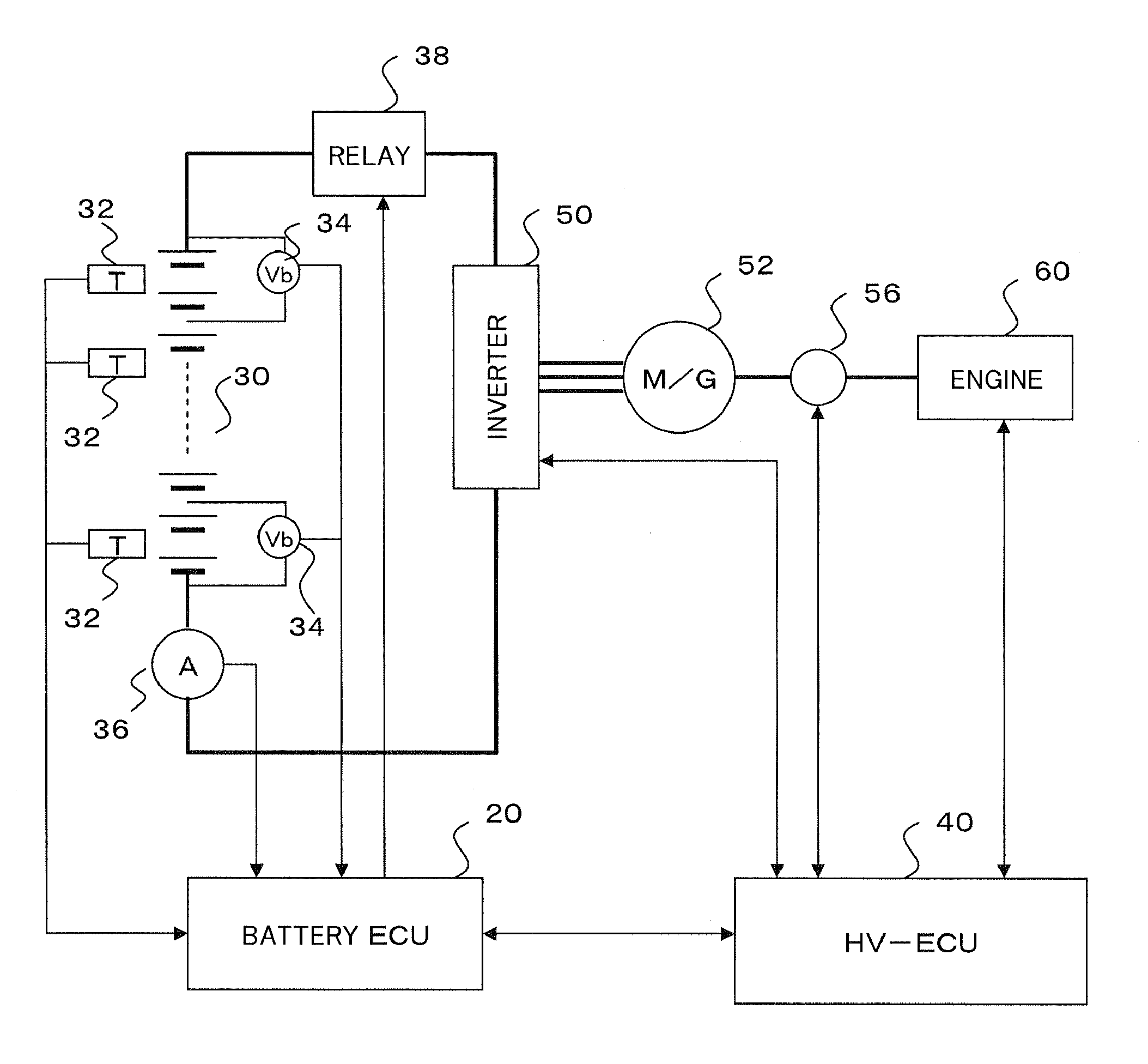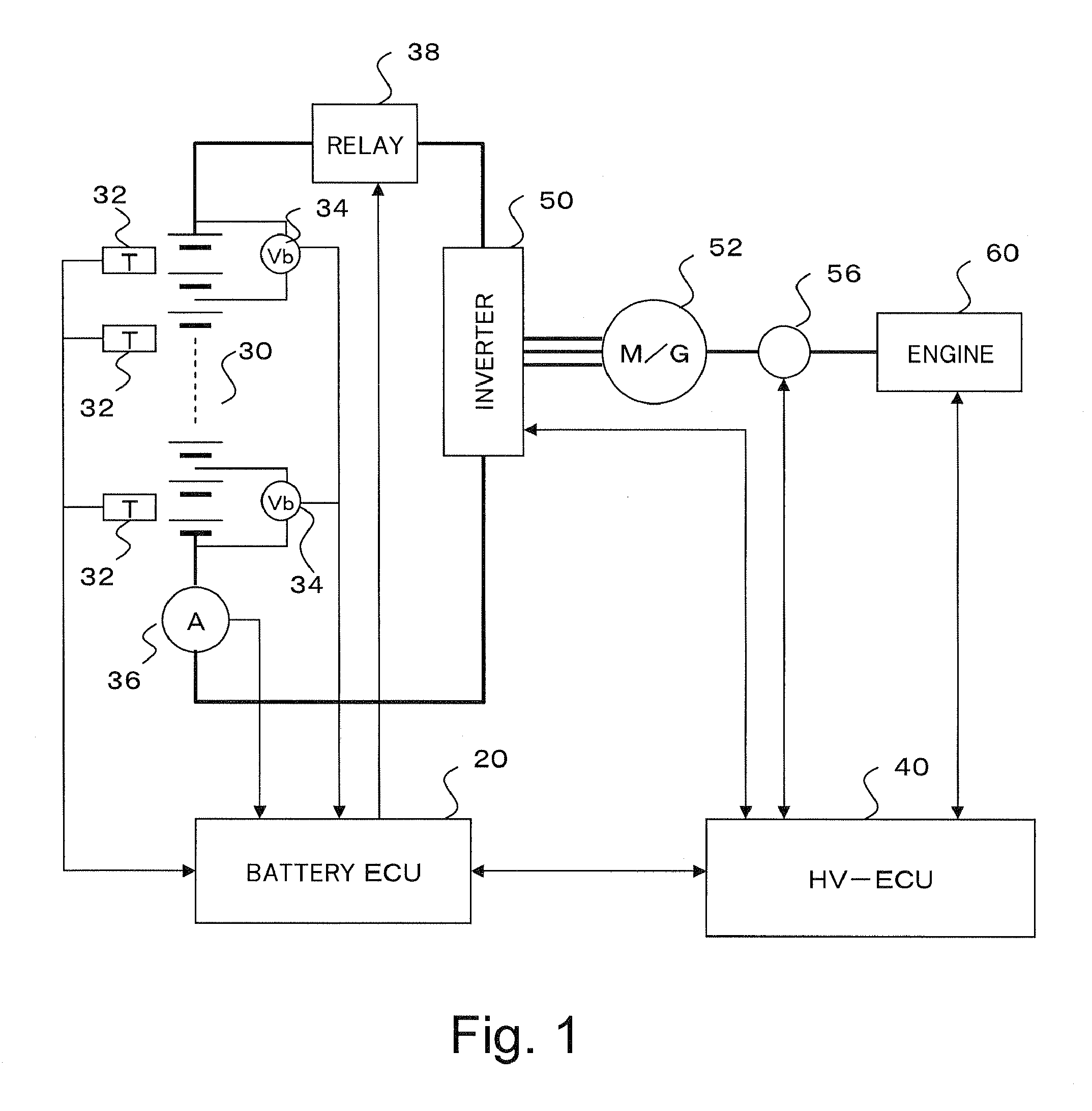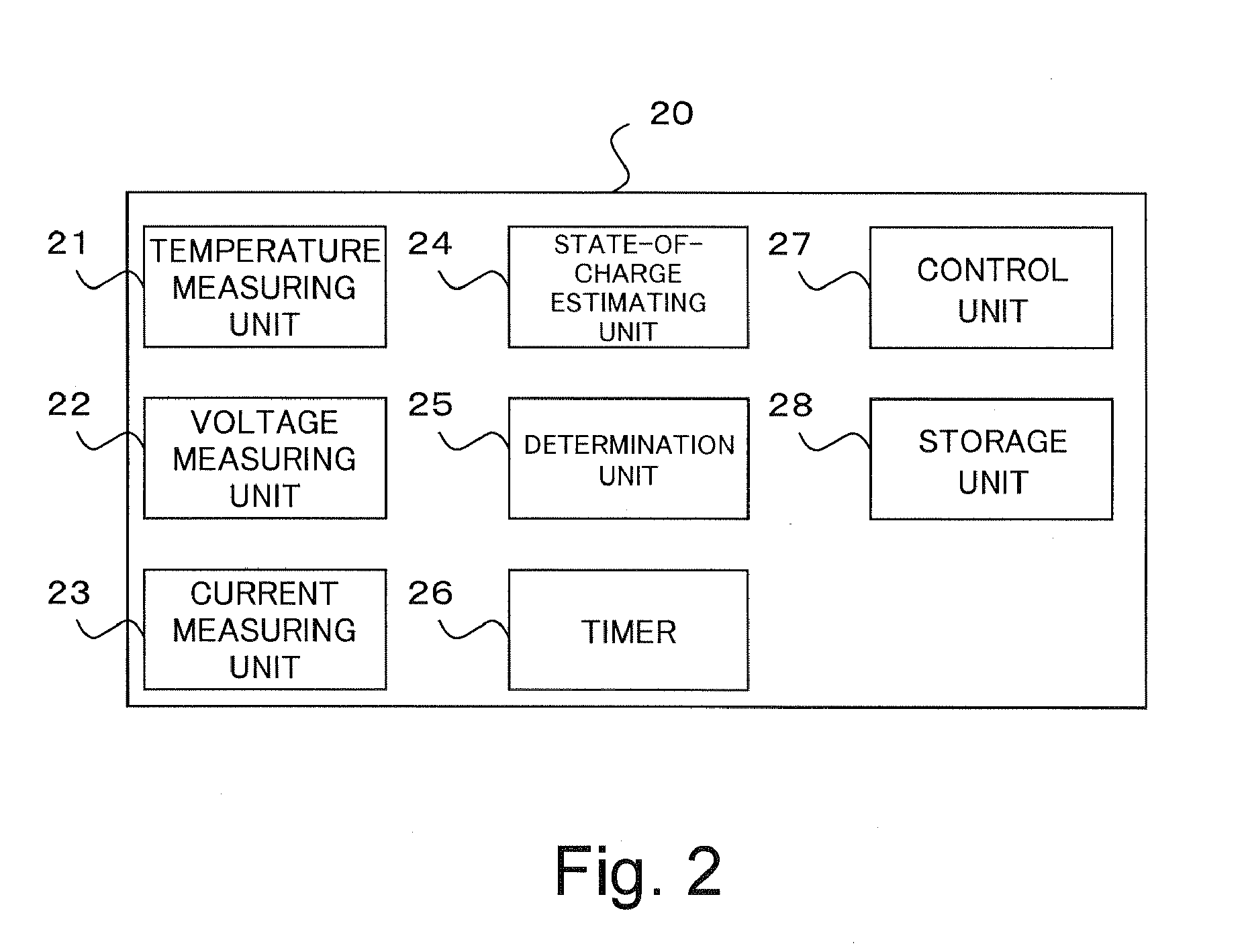Battery control apparatus, electric vehicle, and computer-readable medium storing a program that causes a computer to execute processing for estimating a state of charge of a secondary battery
a control apparatus and secondary battery technology, applied in battery/fuel cell control arrangement, secondary cell servicing/maintenance, instruments, etc., can solve the problems of inaccurate estimation of soc based on cumulative charge/discharge current value of secondary battery, and inability to accurately estimate soc if. , to achieve the effect of accurate estimation of a state of charge and short period of tim
- Summary
- Abstract
- Description
- Claims
- Application Information
AI Technical Summary
Benefits of technology
Problems solved by technology
Method used
Image
Examples
first modified embodiment
[0073]The following is the present embodiment.
[0074]FIG. 6 is a flowchart illustrating a processing procedure for the battery ECU 20 and the HV-ECU 40 in an engine startup operation according to the first modified embodiment.
[0075]As illustrated in FIG. 6, according to the first modified embodiment, if the engine startup operation has failed (NO in step S124), the processing flow proceeds to step S130. In step 130, the battery ECU 20 determines whether the charge / discharge dormant period of the secondary battery 30 is shorter than the predetermined time ta. If the charge / discharge dormant period is shorter than the predetermined time ta (YES in step S130), the battery ECU 20 prohibits the motor generator 52 from operating. If the dormant period is equal to or longer than the predetermined time ta (NO in step S130), the processing flow proceeds to step S132. In step S132, the battery ECU 20 activates the motor generator 52 again.
[0076]As described above, if an engine startup operatio...
second modified embodiment
[0077]The following is the present embodiment.
[0078]The above-described embodiments may inaccurately estimate the SOC if there are any measurement errors in the detection of the discharge current and the battery voltage, even if a polarization voltage of the secondary battery 30 is taken into consideration in the estimation of the present SOC.
[0079]In view of the foregoing, the second modified embodiment is configured to evaluate the present SOC when the present SOC is obtained.
[0080]FIG. 7 is a flowchart illustrating a processing procedure for the battery ECU 20 and the HV-ECU 40 in an engine startup operation according to a second modified embodiment.
[0081]As illustrated in FIG. 7, the second modified embodiment includes step S118 of obtaining a present SOC based on the battery temperature T, the peak discharge current Is, and the peak battery voltage drop ΔVs. Then, in step S119, the battery ECU 20 determines whether the present SOC is higher than the previous SOC. If the present...
third modified embodiment
[0083]The following is the present embodiment.
[0084]If the secondary battery 30 is left for a long time, the secondary battery 30 causes a self discharge and an SOC may be significantly lower than the previous SOC when a charge / discharge of the secondary battery 30 resumes. In such a case, an overdischarge phenomenon may appear immediately after the charge / discharge operation of the secondary battery 30 resumes. Hence, the third modified embodiment executes predetermined anti-overdischarge processing (which may be referred to as “low-voltage cut-off” processing) when the charge / discharge operation of the secondary battery 30 resumes, i.e., when the present SOC estimated in the engine startup operation falls below a predetermined SOC level (i.e., a criteria being set for determining the possibility of causing an overdischarge in the secondary battery 30).
[0085]FIG. 8 is a flowchart illustrating a processing procedure for the battery ECU 20 and the HV-ECU 40 in an engine startup opera...
PUM
 Login to View More
Login to View More Abstract
Description
Claims
Application Information
 Login to View More
Login to View More - R&D
- Intellectual Property
- Life Sciences
- Materials
- Tech Scout
- Unparalleled Data Quality
- Higher Quality Content
- 60% Fewer Hallucinations
Browse by: Latest US Patents, China's latest patents, Technical Efficacy Thesaurus, Application Domain, Technology Topic, Popular Technical Reports.
© 2025 PatSnap. All rights reserved.Legal|Privacy policy|Modern Slavery Act Transparency Statement|Sitemap|About US| Contact US: help@patsnap.com



